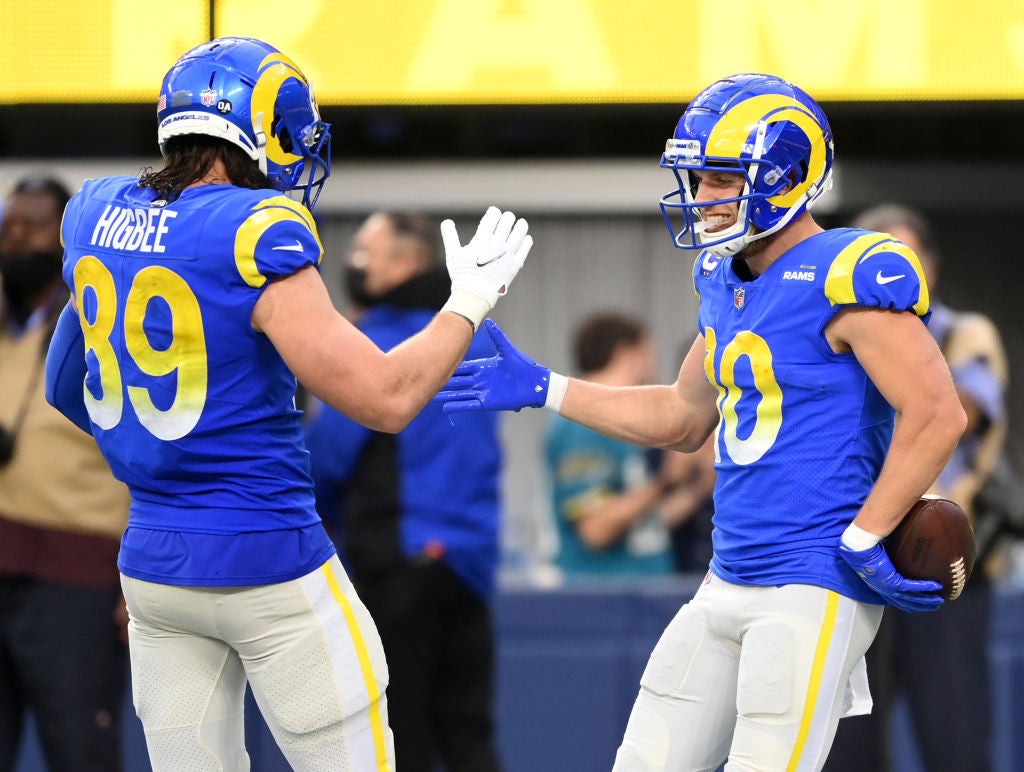
The NFL’s showpiece Super Bowl once again drew in a huge audience as more than 100 million viewers tuned in to see the Los Angeles Rams win the championship on home soil on Sunday (February 13).
The game, in which the Rams beat the Cincinnati Bengals 23-20, averaged 99.18 million viewers on national network NBC and an additional 1.9 million viewers on its Spanish-language sister channel Telemundo.
This was up 8% from the 2021 Super Bowl between the Tampa Bay Buccaneers and the Kansas City Chiefs, which drew about 91.6 million.
According to data from advertising and analytics firm Samba TV, 36 million US households watched the Rams claim victory at their SoFi Stadium home in Inglewood that secured their second championship in franchise history.
This represented a 12% increase from last year's showpiece and meant that one in four US homes tuned in for the game. The 36 million figure is across both linear television and streaming.
The popular Super Bowl Halftime Show was also a big audience draw this year as it shattered 2021’s viewership numbers. A total of 29 million US households viewed the halftime performances – headlined by hip-hop artists Dr. Dre, Snoop Dogg, Mary J. Blige, Kendrick Lamar, and Eminem – an increase of 19% year-over-year.
How well do you really know your competitors?
Access the most comprehensive Company Profiles on the market, powered by GlobalData. Save hours of research. Gain competitive edge.

Thank you!
Your download email will arrive shortly
Not ready to buy yet? Download a free sample
We are confident about the unique quality of our Company Profiles. However, we want you to make the most beneficial decision for your business, so we offer a free sample that you can download by submitting the below form
By GlobalDataThe number of households that tuned in just to watch the Halftime Show (and then tuned out before the 3rd quarter) was up 60% from 2021.
The Halftime Show also attracted a large audience that then stayed for the second half helping to boost overall ratings for the Super Bowl. Around 1.2 million households began watching the Super Bowl during the Halftime Show and stayed to watch the second half.
Meanwhile, in Canada, the Rams’ victory was the most-watched broadcast in the country since last year’s Super Bowl, attracting an average audience of 8.1 million viewers on CTV, TSN, and RDS, the national networks owned by multimedia company Bell Media.
Overall, 16.9 million unique Canadian viewers, or 45% of Canada's population, tuned in to watch the championship game, meaning that nearly one in two Canadians watched some or all of the broadcast.
The Canadian audience peaked at 11.4 million viewers for the Halftime Show.
Super Bowl LVI ranks as Canada's most-watched broadcast of the 2021-22 season.
Super Bowl content also drove engagement across TSN's social media platforms, garnering 5.5 million views.
Overall, the 2021 NFL season attracted strong engagement across TSN's digital platforms, with live streaming viewership of NFL games growing by 34% compared to the 2020 season.
Elsewhere, in the UK, the audience on public service broadcaster the BBC peaked at 1.3 million, topping the 1.2 million peak figure from 2021.
Jacob Kemp, analyst at GlobalData, commented: “The expected high ratings of this year’s Super Bowl have come despite the low profile of both participating teams on social media, with the Rams and the Bengals holding only the 28th and 30th (of 32) highest combined online followings across the league.
“The increase in viewing figures will be a welcome relief for the NFL which has been in a steady decline in recent years, with last year’s event hitting a domestic low of 91.63 million, the lowest since 2006.
“The unexpected matchup of the Super Bowl perhaps created a new narrative away from the best versus the best, Brady versus Mahomes, with more people enticed by the superstars of LA taking on the underdogs of the Bengals, a team which hadn’t even won a single postseason game since 1990 and led by a marketable young quarterback in Joe Burrows.
“The hype was also matched by the action on the pitch, with the result offering the closest contested Super Bowl since the Patriots’ overtime victory in 2017. A competitive, dramatic game, combined with a very well-received Halftime Show entertainment are big both factors for building live TV interest.”
Sponsors and advertisers of the Super Bowl were also big winners as brands received an estimate of $170 million worth of “in-game exposure,” or sponsorship activation embedded in the actual game production content, according to figures released by software firm Hive and sports marketing agency Elevate obtained by CNBC.
By comparison, the 2021 Super Bowl generated $169 million in in-game brand exposure, while the 2020 edition garnered about $143 million.
The valuations were based on the length of time a brand was featured, as well as “quality” and “size” of its logo during exposure, CNBC reported.
Major brands such as NIKE, PepsiCo, and Bose, had the biggest share of media exposure, according to the figures.
Traditional Super Bowl commercials also generated significant attention, particularly in the cryptocurrency sector.
Coinbase’s commercial drew more than 20 million hits on its landing page within 60 seconds, which momentarily crashed its website.
Kemp added: “Brands were very committed to getting back involved, with many major Super Bowl sponsors returning after a short break in 2021, where Covid-19 saw the likes of Budweiser pull back on their ad-spend during the event.
“With high brand interest, NBC’s inventory sold out fast and was able to bring in (reportedly) record sums from each 30-second ad space, with the average cost put between $6.5 and 7 million, around $1 million more than last year.”







